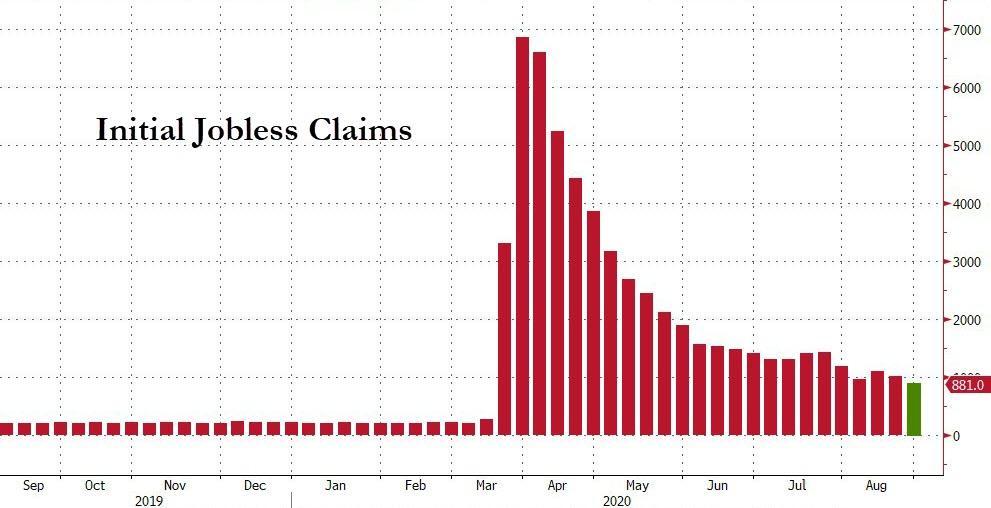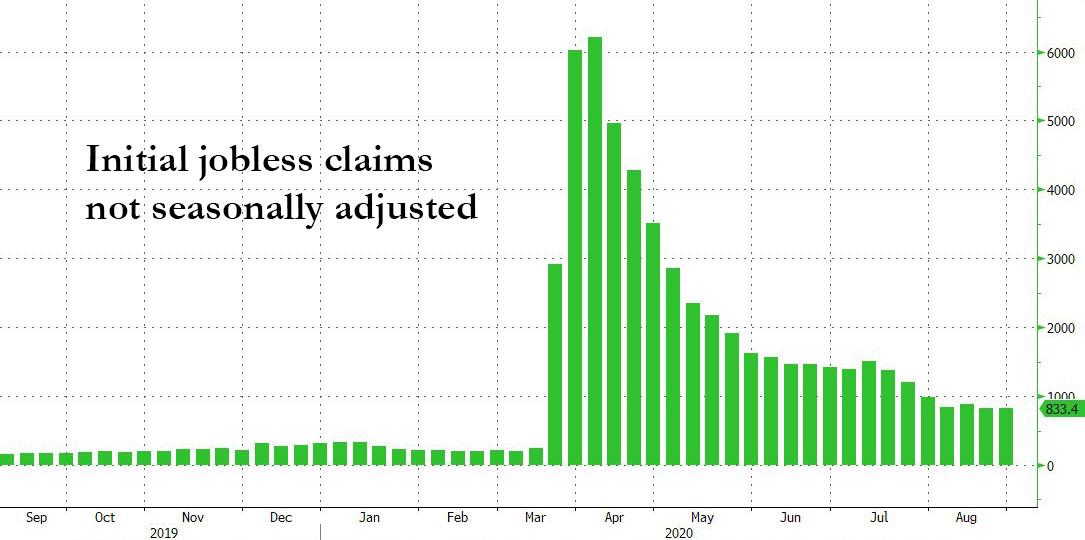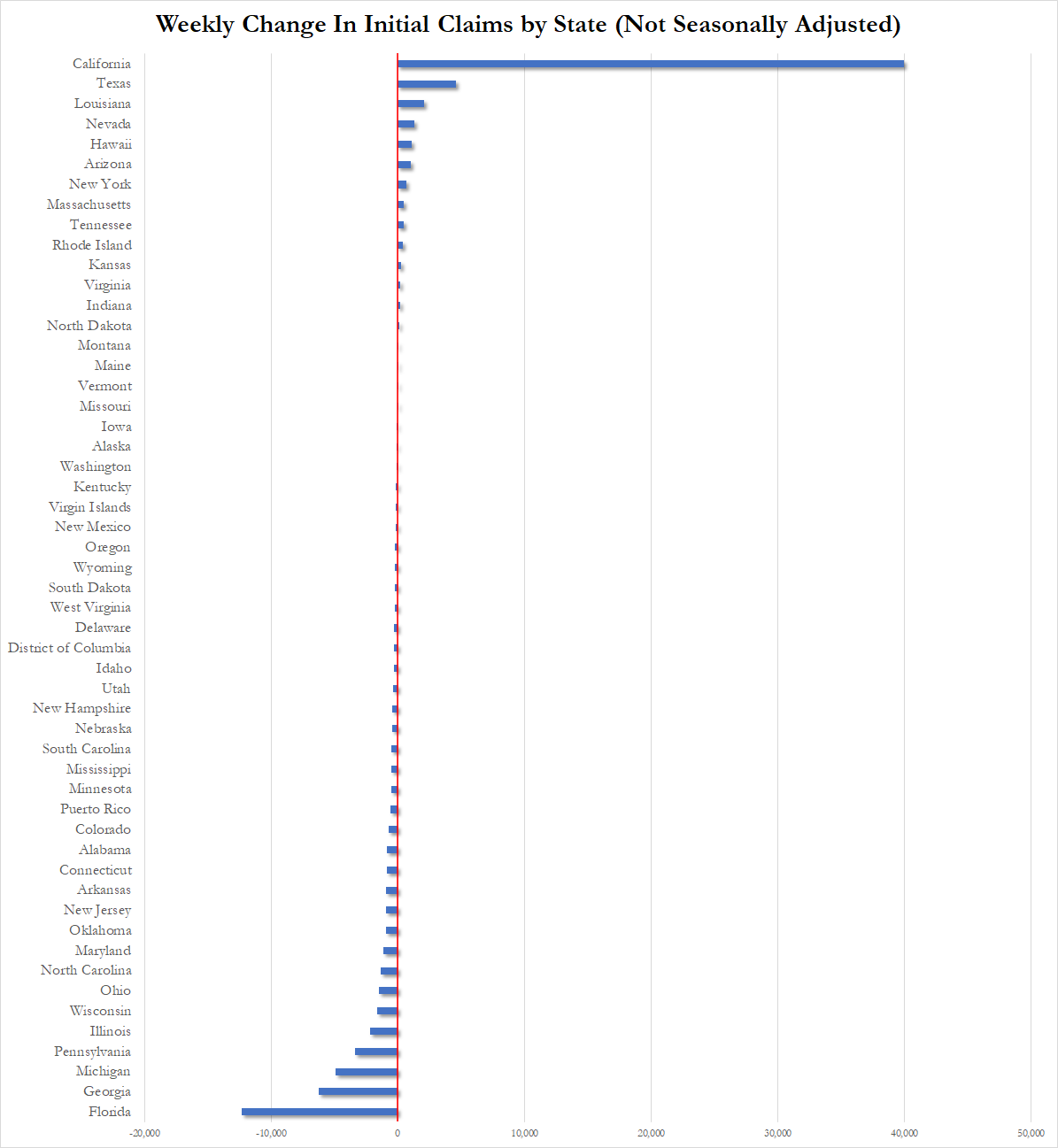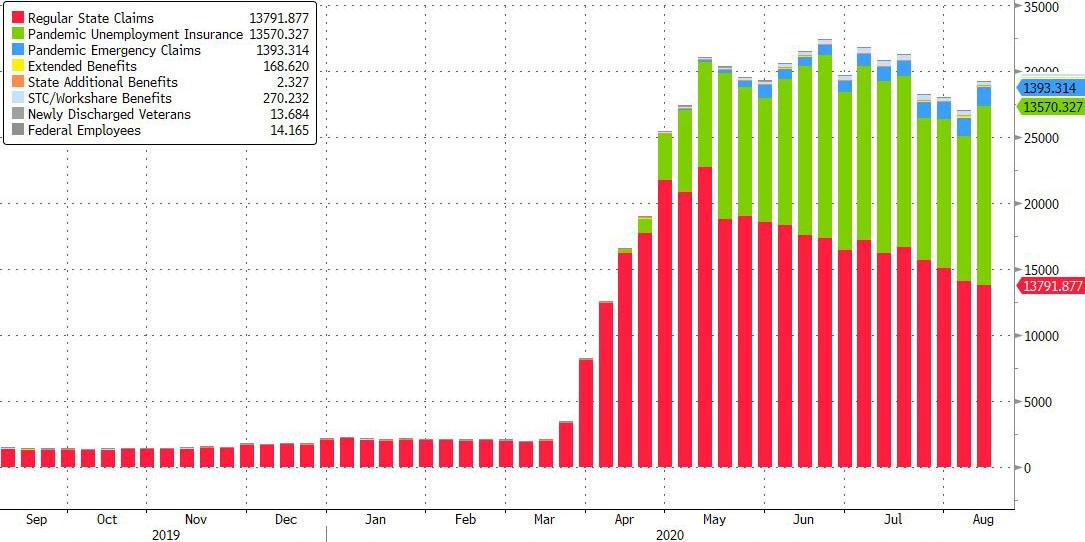About Those Stellar Initial Claims…
Tyler Durden
Thu, 09/03/2020 – 14:50
To much fanfare, the DOL this morning reported that in the week ended Aug 29, there were “only” 881K new initial jobless claims filed, better than the 950K expected, down from 1.01 million the week prior and the lowest since the covid lockdowns.
The Trump admin was quick to praise these numbers which coming just one day before the suddenly important payrolls report, suggest that August payrolls would be far better than whisper numbers.
There is just one problem: the latest claims report was nothing more than the latest goalseeked government propaganda, boosted this time by a brand new “seasonal adjustment.”
As Goldman explains, the DOL switched from a multiplicative to an additive seasonal factor in this release. If one had applied the historical, multiplicative, seasonal factor, the seasonally adjusted initial claims would have decreased by only 17k to 994k, 44k worse than expected.
Stripping away the seasonal adjustment factor entirely revealed an even uglier picture, as actual initial claims rose from 826K to 833K, a level that has been virtually unchanged for the past 4 weeks.
Furthermore, due to the unprecedented disruption from the covid shutdowns, it is bizarre why one would seek to “seasonally smooth” a historic outlier event which has no precedented in history, and certainly no recurring seasonal component.
And while a state-by-state drilldown showed a modest improvement, with claims decreasing by 12k in Florida, 6k in Georgia, and 5k in Michigan, they soared by 41k in California. These are real claims, not statistically smoothed for political purposes.
It gets worse: when looking at the initial applications under the separate federal Pandemic Unemployment Assistance program which targets the self-employed, gig workers and others who don’t typically qualify for state programs, here the number jumped by about 152,000 to 759,000, led almost entirely by an increase in California, and some 86% of the entire traditional Initial Claims print.
Meanwhile, on an NSA basis, continuing claims fell by 765k to 13,104k last week, yet applying a multiplicative seasonal adjustment (i.e., the one that was replaced) implies that seasonally adjusted continued claims increased by 368k to 14,860k.
Separately, when adjusting for biweekly filing schedules in Florida and California, Goldman estimates the level of continuing claims was also slightly higher at 13,389k, while for the week ended August 29, initial Pandemic Unemployment Assistance (PUA) claims increased by 152k to 759k.
Finally adding across all the various continuing jobless claims categories, where pandemic benefits have emerged as the biggest component with nearly 15 million in claims between Pandemic Unemployment Assistance and Pandemic Emergency Claims, the total number of persons claiming benefits across all programs rose by 2.2 million, from 27.0 million to 29.2 million. This number was unadjusted so there was no politically-biased jiggering that the DOL could apply to it, although we should note that figure has been likely inflated by states counting multiple retroactive weeks by one person instead as multiple people.
Putting it all together, Joshua Shapiro, chief U.S. economist at Maria Fiorini Ramirez said that “It’s very difficult to make any hard conclusions about what one particular week’s worth of data means” adding there’s “still quite a huge amount of people out there that are receiving benefits.”
Yes, 30 million certainly qualifies a “quite a huge” number.
via ZeroHedge News https://ift.tt/2YYJeqr Tyler Durden



